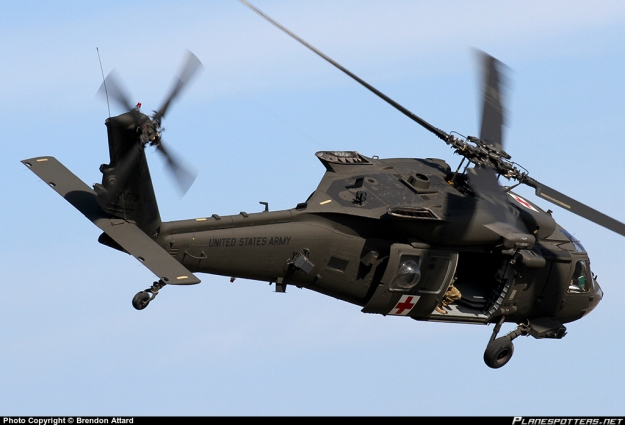Safety And Security First: Crucial Steps in UH 60 Helicopter Maintenance
Wiki Article
Comprehending the Mechanics and Design Behind Uh 60 Helicopters
The UH-60 helicopter, frequently understood as the Black Hawk, stands as a peak of modern rotorcraft innovation, personifying a mix of robust engineering and intricate auto mechanics. As we peel back the layers of the UH-60's style, a globe of intricate systems and thorough engineering comes to light.Background of UH-60 Helicopters
The history of UH-60 helicopters traces back to the late 1970s when the USA Military looked for a functional and advanced utility helicopter to replace its aging fleet. In response to this demand, the Sikorsky Aircraft Company developed the UH-60 Black Hawk helicopter. Presented in 1979, the UH-60 quickly became a staple in armed forces operations as a result of its excellent abilities.
The UH-60 was created to stand out in a selection of missions, consisting of troop transportation, medical evacuation, electronic war, and special procedures. Its capability to adapt to different roles made it a valuable possession to the U.S. uh 60. Army and other military forces around the world
Over the years, the UH-60 platform has undertaken a number of upgrades and variants to boost its efficiency and keep pace with developing goal needs. These helicopters have actually seen comprehensive solution in problems such as the Gulf Battle, Afghanistan, and Iraq, showcasing their integrity and versatility in varied functional atmospheres. The UH-60's abundant background is a testament to its enduring heritage as a premier utility helicopter.

Engine and Power Systems
Making use of advanced propulsion technology, UH-60 helicopters are furnished with innovative engine and power systems to ensure optimum performance and dependability in a series of functional circumstances. The UH-60, commonly known as the Black Hawk, is powered by two General Electric T700-GE-701D engines, each with the ability of delivering up to 1,940 shaft horse power. These turboshaft engines offer the needed thrust for the helicopter to execute its goals successfully, consisting of troop transportation, medical discharge, and fight assistance.
Blades System and Aerodynamics
How do the blades system and the rules of aerodynamics of UH-60 helicopters add to their functional efficiency and flight abilities? The rotor system of the UH-60 helicopter plays an important function in giving lift and propulsion. The UH-60 features a four-bladed, totally verbalized rotor system that permits high ability to move and security during flight. This design site here makes it possible for the helicopter to execute a wide variety of missions, from transport and medical discharge to deal with procedures.Aerodynamics likewise play a key function in the performance of UH-60 helicopters. The structured body and rotor blade design decrease drag, enabling the helicopter to attain higher speeds and better gas efficiency. The aerodynamic layout of the UH-60 also adds to its ability to operate in varied environmental conditions, including high elevations and warm temperatures.
Avionics and Trip Control Solution

In its elaborate control with the rotor system and the rules of aerodynamics of UH-60 helicopters, the avionics and trip control systems create a critical network of modern technologies forming the airplane's operational capacities. In the UH-60, these systems include electronic display screens, communication radios, GPS navigating, weather radar, and autopilot systems.
The flight control systems of the UH-60 are in charge of translating the pilot's inputs into the ideal changes to the blades system, ensuring secure flight and ability to move. These systems are composed of hydraulic actuators, servos, and computer systems that collaborate to manage the tail and major rotors, in addition to various other flight control surface areas. By specifically managing the helicopter's flight dynamics, these systems allow pilots to do a variety of missions, from transportation and search-and-rescue to fight procedures, with accuracy and self-confidence.
Function and Applications in Air Travel
Avionics systems in UH-60 helicopters include an array next page of digital systems that help in navigation, communication, monitoring, and managing different airplane functions. These systems include digital screens, autopilot systems, interaction radios, GPS navigating devices, and weather radar. In addition, these systems incorporate safety attributes such as autopilot modes, terrain awareness warning systems, and security augmentation systems to enhance the total safety and security and functional abilities of the UH-60 helicopters in various missions, including army transport, clinical discharge, search and rescue, and airborne firefighting.Verdict
In final thought, the UH-60 helicopter is a versatile aircraft with an abundant background and advanced design. Its engine and power systems, blades system, the rules of aerodynamics, avionics, and trip control systems all work with each other to make it a reliable and trusted device.In its elaborate control with the rotor system and aerodynamics of UH-60 helicopters, the her explanation avionics and flight control systems form an important network of modern technologies forming the aircraft's operational capabilities.The flight control systems of the UH-60 are accountable for translating the pilot's inputs right into the ideal modifications to the blades system, guaranteeing stable flight and ability to move. Avionics systems in UH-60 helicopters incorporate an array of electronic systems that help in navigation, interaction, surveillance, and controlling numerous aircraft features. In addition, these systems include safety functions such as auto-pilot settings, terrain recognition cautioning systems, and stability augmentation systems to improve the overall safety and functional capabilities of the UH-60 helicopters in various objectives, including troop transportation, medical evacuation, search and rescue, and airborne firefighting.
Its engine and power systems, blades system, the rules of aerodynamics, avionics, and flight control systems all function with each other to make it a efficient and reputable machine.
Report this wiki page